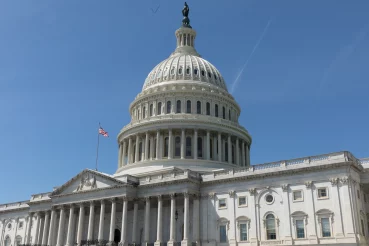Welcome to our Winter Newsletter. In this issue, we give our 2021 market recap and what we expect heading into 2022. In addition, we discuss President Biden’s Infrastructure Investment and Jobs Act, recently signed into law. Lastly, we share updated figures as it relates to retirement plan contribution limits for 2022.
Investment Commentary
2021 Market Recap
It was another remarkable year for the S&P 500 Index. Not only did the index of large-cap U.S. stocks return a stunning 28.7% (nearly triple its long-term historical average) but for only the second time in market history, the index reached a new high in every single month.
While the S&P 500 soared to new heights, it also dominated U.S. small-cap stocks (Russell 2000 Index, up 14.8%), developed international stocks (MSCI EAFE Index, up 11.3%), and emerging-market stocks (MSCI EM Index, down 2.5%) for the year. Much of this outperformance occurred in the fourth quarter, with the S&P 500 gaining 11.0%, compared to 2.1%, 2.7%, and -1.3% for small caps, developed international stocks, and EM stocks, respectively. The renewed surge in COVID-19 infections late in the year (particularly in Europe and emerging markets) and China’s economic slowdown (and subsequent stock market decline) were key drivers of this relative performance. Additionally, the out-sized influence of the largest holdings, mega-cap tech stocks Apple, Microsoft, Amazon, Alphabet, Tesla, Meta, NVIDIA, etc., continued to push the S&P 500 higher.
Looking further beneath the surface of the U.S. market, while the large-cap Russell 1000 Value and Growth indexes both returned over 25% in 2021, the two styles of investing rotated in and out of favor all year long. Top-performing sectors included energy (up 54.6%), real estate (up 46.2%), financials (up 35.0%) and information technology (up 34.5%). Lower performing sectors included the traditional “defensive” sectors, utilities (up 17.7%) and consumer staples (up 18.6%). The core bond index (Bloomberg US Aggregate Bond Index) lost 1.5% for the year, as interest rates rose only moderately. The benchmark 10-year Treasury bond yield ended the year at 1.51%, compared to a 0.92% yield at the end of 2020. Credit markets fared better than core bonds in 2021. The U.S. high-yield bond index returned 5.4% as monetary policy remained historically accommodative and the Fed remained dovish throughout most of the year, with their tenor and tone turning slightly more hawkish only late in the year.
Looking Ahead
As we look to a new year, we are reminded of the saying “the only true constant is change.” We expect volatility to be the norm throughout much of 2022. In fact, as we finalize this letter only a few weeks into 2022, the three major U.S. indices (Dow, S&P 500, Nasdaq) have all already either flirted with or crossed into correction territory at various points. Inflation continues at levels not experienced for decades, prompting the Fed to confirm its intention to wind down the bond purchase program and begin interest rate hikes by March. Adding to the uncertainty remains of course how the pandemic unfolds from here, geo-political concerns (particularly Russia / Ukraine and to a lesser extent China / U.S. relations), and the seemingly always present dysfunction in Washington, D.C.
We are hopeful that a still robust U.S. consumer, including additional pent up demand expected to be released after the most recent COVID surge, relatively low interest rates by historical standards (even after anticipated hikes) and improvements in the global supply chain will help off-set the current “wall of worry”.
As always, each of our clients has unique circumstances that require individual attention. This is true now more than ever. We look forward to connecting with you regularly throughout 2022, to ensure your investment plan remains appropriate, regardless of the inevitable short-term surprises markets can and will spring on us all. We wish you and your families’ health and prosperity in the coming year, and remain grateful for your business and friendship.
The Bipartisan Infrastructure Deal: What’s In and What’s Out?
On November 15, 2021, President Biden signed into law the Infrastructure Investment and Jobs Act – a $1.2 trillion package that will funnel billions to states and local governments to upgrade outdated bridges, roads, transit systems, airports, and more. While “bipartisan” may be a bit of an overstatement – only 13 Republicans in the House and 19 Republicans in the Senate joined their Democratic colleagues in voting for the bill – this represents the largest single investment in our nation’s infrastructure in history. Here are the highlights of what is in the 2,702-page bill, what was left out, and what it all means.
What Is In
The bill adds roughly $550 billion of additional spending above projected federal spending on general infrastructure. This extra spending can be categorized into two buckets: transportation and all other infrastructure.
Transportation: $284 billion. This includes $110 billion for roads, bridges, and other “major projects” and $39 billion to modernize and make public transit more accessible to the disabled and elderly. Significant portions of this will make their way to major transit systems, including the NY metro area. About $66 billion will go to upgrade passenger and freight rail (the vast majority is reserved for Amtrak), $25 billion to airports, $17 billion to port infrastructure, and $15 billion for electric vehicles and zero/low emission buses and ferries.
Other Infrastructure: $264 billion. This includes $73 billion to update and expand the electric grid, $65 billion to improve the nation’s broadband (particularly in rural areas), and $55 billion to upgrade water and wastewater infrastructure.
What Is Out
Aging and Disabled American Expanded Care: $400 billion. The major piece left out of this legislation is President Biden’s $400 billion proposal to bolster caregiving for aging and disabled Americans. This would have expanded access to long-term care services under Medicaid and allowed for more people to receive care at home through community-based services or family members.
Workforce Development and VA Hospital Upgrades: $118 billion: In addition, the original proposal from the Biden administration called for $100 billion for “workforce development” – essentially creating a fund for training dislocated workers, underserved groups, and vocational training for students prior to graduation. Another $18 billion for modernizing VA hospitals was also removed from the final bill.
Corporate Tax Increases: Also left out of the final bill were a variety of tax increases aimed at high earners and large businesses which would have funded much of the bill. These included increasing the corporate tax rate to 28% and increasing the minimum tax on US corporations to 21%.
What It All Means
While the final law is less than a third of what the original proposal was, it still represents the largest investment in the nation’s infrastructure in a generation. While half of the bill is paid for by appropriating unused COVID relief monies, the CBO still projects the bill to add over $250 billion to the deficit over the next decade.
There was never any doubt (on either side of the aisle) that the country needed massive infrastructure upgrades. What remains to be seen includes how long it will take to get “shovels in the ground”, the “return on investment” for the economy and the long-term consequences of this massive amount of spending.
IRS Announces Contribution Limits for 2022
Retirement Plan Contribution Limits
The Internal Revenue Service announced that the amount individuals can contribute to their 401(k) plans in 2022 has increased.
The contribution limit for employees who participate in 401(k), 403(b), most 457 plans, and the federal government’s Thrift Savings Plan is increased to $20,500, up from $19,500. The income ranges for determining eligibility to make deductible contributions to traditional Individual Retirement Arrangements (IRAs), to contribute to Roth IRAs, and to claim the Saver’s Credit all increased for 2022.
Taxpayers can deduct contributions to a traditional IRA if they meet certain conditions. If during the year either the taxpayer or the taxpayer’s spouse was covered by a retirement plan at work, the deduction may be reduced or phased out until it is eliminated, depending on filing status and income.
Here are the phase-out ranges for 2022:
- For single taxpayers covered by a workplace retirement plan, the phase-out range is increased to $68,000 to $78,000, up from $66,000 to $76,000.
- For married couples filing jointly, if the spouse making the IRA contribution is covered by a workplace retirement plan, the phase-out range is increased to $109,000 to $129,000, up from $105,000 to $125,000.
- For an IRA contributor who is not covered by a workplace retirement plan and is married to someone who is covered, the phase-out range is increased to $204,000 to $214,000, up from $198,000 to $208,000.
- For a married individual filing a separate return who is covered by a workplace retirement plan, the phase-out range is not subject to an annual cost-of-living adjustment and remains $0 to $10,000.
The income phase-out range for taxpayers making contributions to a Roth IRA is increased to $129,000 to $144,000 for singles and heads of household, up from $125,000 to $140,000. For married couples filing jointly, the income phase-out range is increased to $204,000 to $214,000, up from $198,000 to $208,000. The phase-out range for a married individual filing a separate return who makes contributions to a Roth IRA is not subject to an annual cost-of-living adjustment and remains $0 to $10,000.
The income limit for the Saver’s Credit (also known as the Retirement Savings Contributions Credit) for low- and moderate-income workers is $68,000 for married couples filing jointly, up from $66,000; $51,000 for heads of household, up from $49,500; and $34,000 for singles and married individuals filing separately, up from $33,000.
The amount individuals can contribute to their SIMPLE retirement accounts is increased to $14,000, up from $13,500.
Key Employee Contribution Limits Remain Unchanged
The limit on annual contributions to an IRA remains unchanged at $6,000. The IRA catch-up contribution limit for individuals aged 50 and over is not subject to an annual cost-of-living adjustment and remains $1,000.
The catch-up contribution limit for employees aged 50 and over who participate in 401(k), 403(b), most 457 plans, and the federal government’s Thrift Savings Plan remains unchanged at $6,500. Therefore, participants in 401(k), 403(b), most 457 plans, and the federal government’s Thrift Savings Plan who are 50 and older can contribute up to $27,000, starting in 2022. The catch-up contribution limit for employees aged 50 and over who participate in SIMPLE plans remains unchanged at $3,000.”





